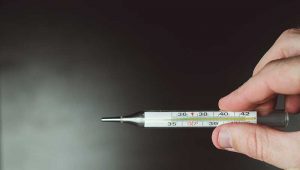Body temperature reflects more than the weather outside. According to a new study, our temperature may be able to improve the recovery of people with brain damage.
Humans are warm-blooded, which means our body temperature is controlled by our bodies rather than remaining the same temperature as our surroundings. However, we do not constantly remain at a steady 98.6 degrees Fahrenheit. Our temperature changes slightly throughout the day according to our activity level and even our circadian rhythm. This pattern may be key to helping people with brain injuries regain consciousness and recover without permanent brain damage.
Temperature and Circadian Rhythm in Patients with Brain Damage
Researchers looked at the variations in body temperature in patients who were unconscious due to head injuries or similar factors. Using the fluctuations in body temperature as well as other cues, they were able to determine the circadian rhythms of these patients, which ranged from 23.5 to 26.3 hours. In addition, the patients were evaluated according to a coma scale that assesses consciousness using factors such as ability to open eyes with stimulation and moaning when in pain.
Patients that had a circadian rhythm close to 24 hours and resembling that of healthy humans had higher levels of consciousness and were more likely to recover from their injury. In addition, exposing patients to bright lights during the day appears to help their circadian rhythm correct itself and encourage recovery. These are interesting findings as they hint that our internal clocks may not just be important in healthy people but also crucial to recovery in very sick ones. In fact, it may play a role in recovery from some of the most serious and life-threatening injuries. This new research also has implications for the role of circadian rhythm in evaluating patients with head injuries. It may be best to evaluate and attempt to rehabilitate them at times when they are the most alert.
The Role of Temperature and Light in Recovery
In addition to using this knowledge of the circadian rhythm in brain injured patients to more effectively test alertness, there are also potential applications for helping people to recover more quickly and completely. If people who have circadian rhythms close to those of healthy people recover consciousness faster, we may be able to improve outcomes by cooling or warming the patient to the correct temperature. They also could be exposed to bright light during the day and dimmer lighting at night to encourage the innate circadian rhythm to begin regulating itself.
This may lead many to wonder exactly how linked body temperature is with your sleep-wake cycle. The answer is more than most people could imagine.
Chronobiology Research on Temperature

In many ways, temperature functions like the light in its effect on the circadian rhythm. However, its effect on our sleep-wake cycles is slightly different. While light can completely reset internal clocks at times, the temperature can merely make them skip forward or backward by short intervals. This moderated effect can be very helpful in gradually adjusting the sleep-wake cycles of people who are unconscious due to a head injury. In addition, while light cues are received using one pathway, from the retinas to the suprachiasmatic nucleus of the hypothalamus to the pineal gland, temperature appears to affect our bodies using multiple pathways. This means that people who suffer brain damage involving one pathway still may have other functioning ones.
Brain damage is one of the most serious injuries that a person can suffer. Because our brains are so complex and responsible for so many bodily functions, people with these injuries are fighting for their lives. Using temperature to influence circadian rhythm could be a low-cost way to improve the chances of a full and speedy recovery.




